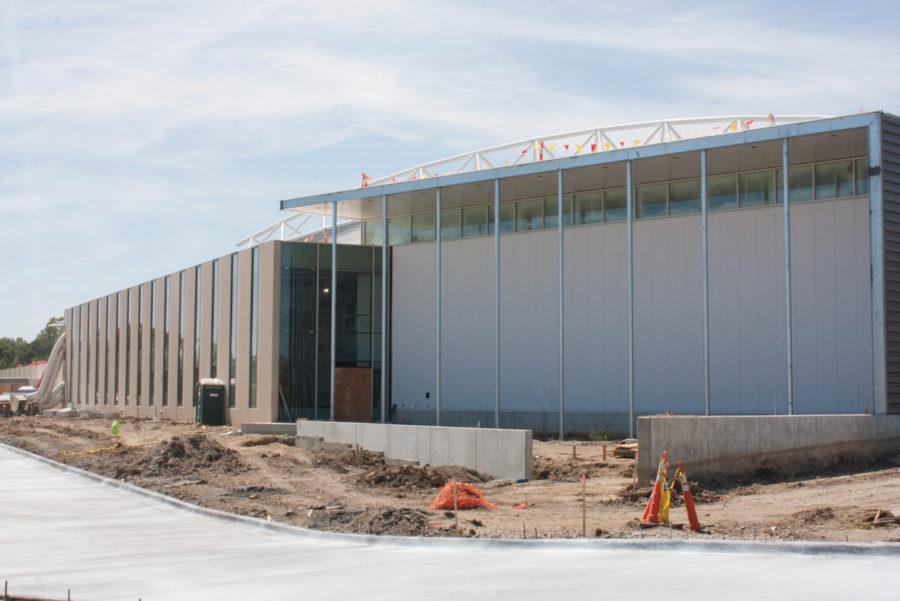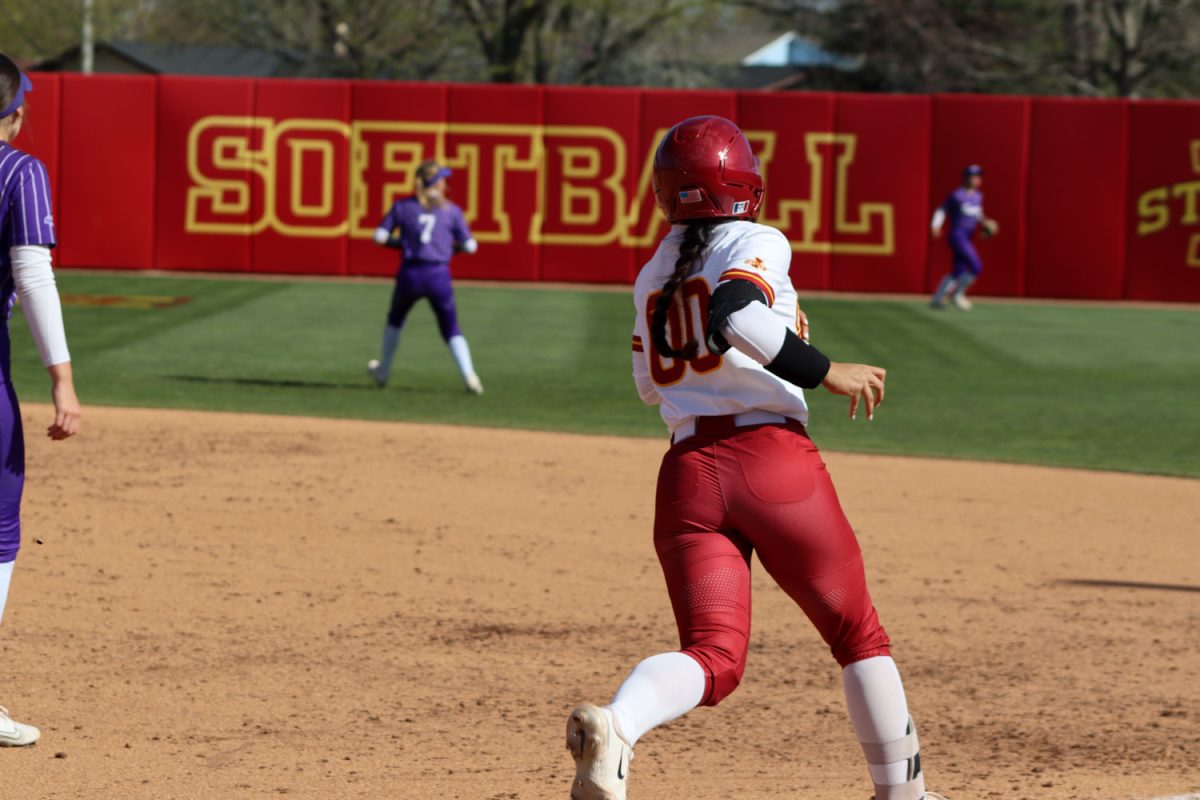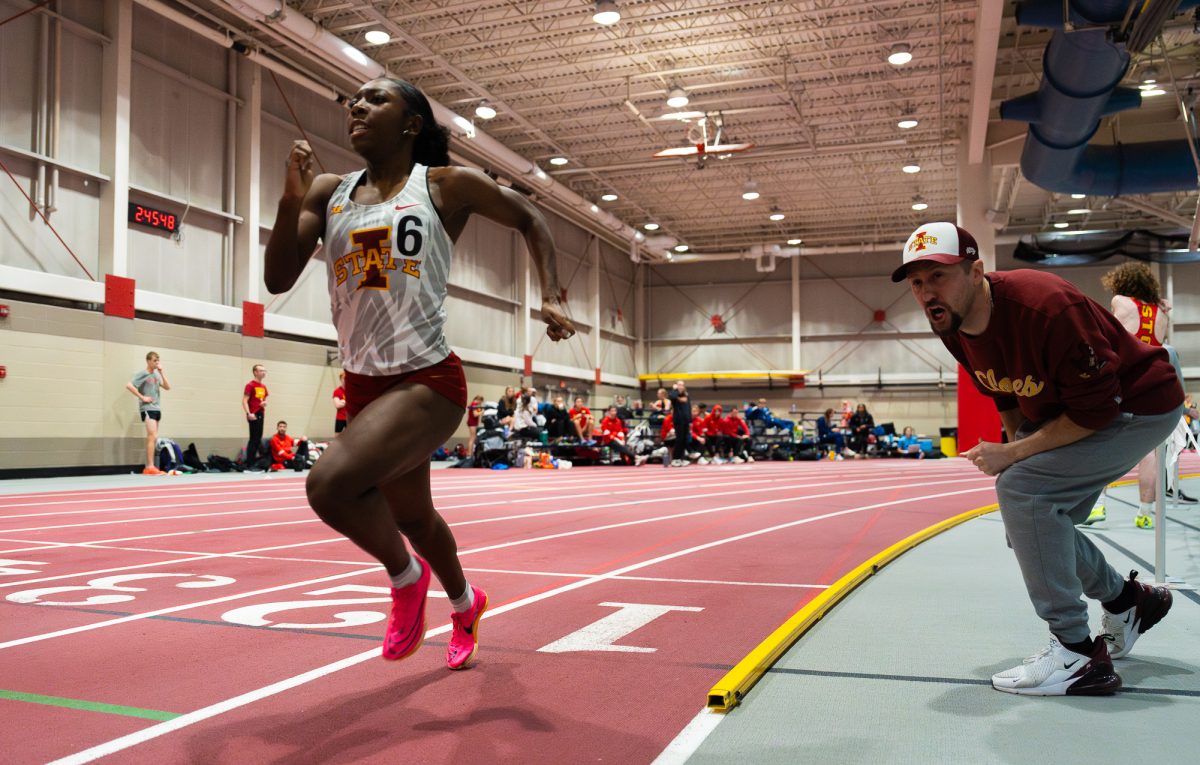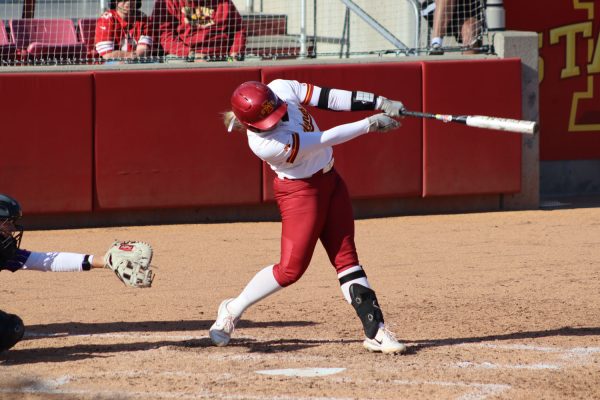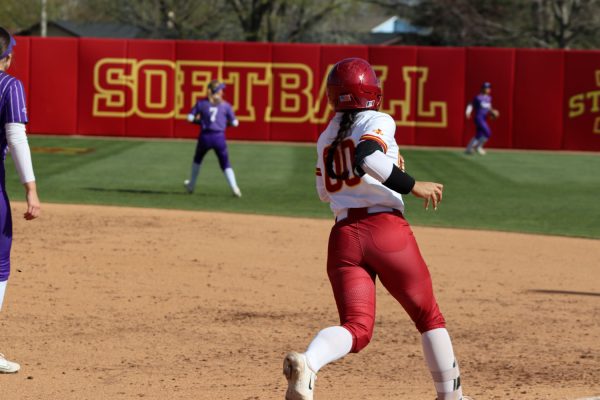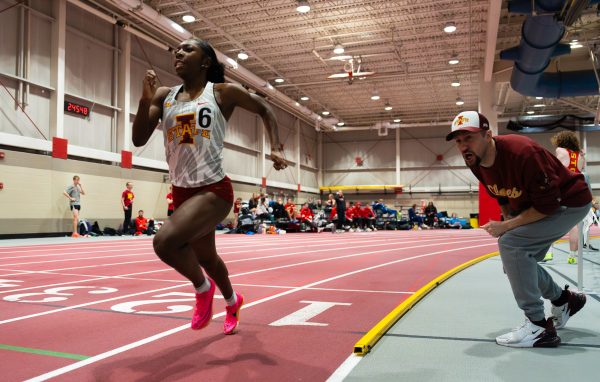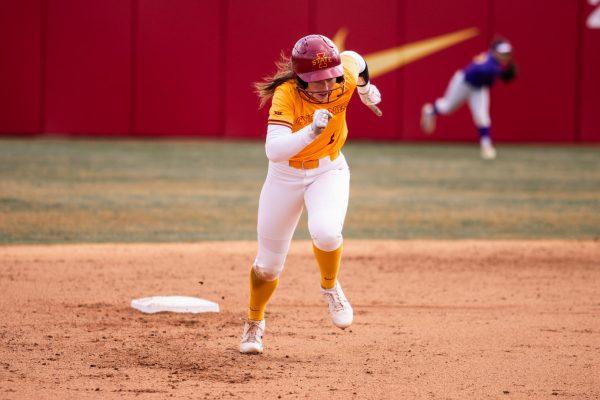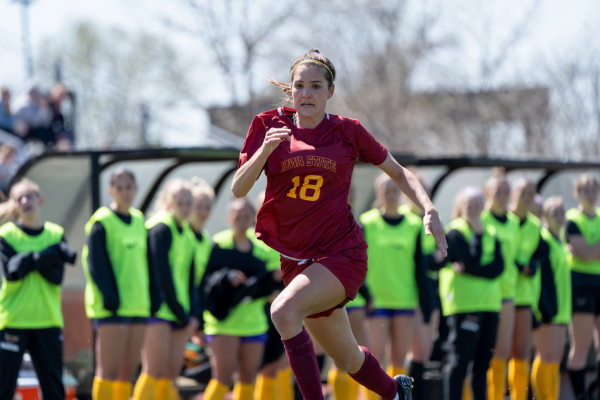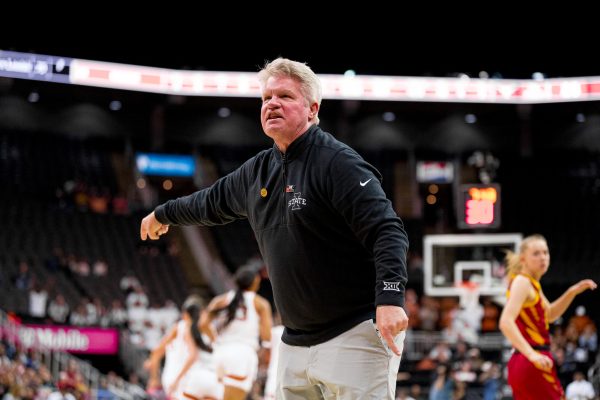Iowa State keeps pace in facility ‘arms race’
August 27, 2012
The landscape of college athletics is quickly changing, and Iowa State has experienced it firsthand as a member of the Big 12 Conference.
There has been conference realignment and there have been huge television deals. The Big 12 has been involved in both.
In the past year, the conference has seen Missouri and Texas A&M depart and has replaced the institutions with Texas Christian and West Virginia.
Now the Big 12 is working on a grant of rights for a 13-year television deal reportedly worth more than $2.6 billion.
And don’t forget about the facility battle among the schools.
“There’s no question that there’s a facilities arms race,” said new Big 12 Commissioner Bob Bowlsby during a recent stop in Ames. “I think it’s a way that institutions can fall behind pretty quickly.”
Athletic programs now have little choice but to make an effort to be a part of that race. Bowlsby said if they do not make that attempt, they will likely fall behind.
“I think probably the best way I could characterize it is the only thing worse than being in the arms race is not being in the arms race,” Bowlsby said. “[If you aren’t] you find that you have trouble attracting and retaining coaches, you have trouble recruiting, you have trouble doing the developmental work that’s required.”
Iowa State has remained heavily involved with the battle. During the past seven years under Athletic Director Jamie Pollard, Iowa State has invested $100 million in new facilities and enhancements of the department’s old ones.
This fall, the university will unveil two newly completed facilities including the Cyclone Sports Complex for soccer, softball and track and field, and the football training facility for coach Paul Rhoads and his team to utilize.
In recent years, the ISU football team has used the Jacobson and Olsen Buildings for offices, locker rooms, training centers and other aspects of daily use. The new facility, which will be completed for an estimated $20.6 million and be adjacent to the Bergstrom Indoor Facility, will house the team under one roof.
Pollard said the decision to act now was two-fold.
“First, and foremost, we felt there was a need to upgrade our current football facilities to help us more efficiently train and develop our football student-athletes and to assist our coaches in recruiting the best possible student-athletes to Iowa State,” Pollard said.
“Secondly, we wanted to demonstrate to Coach Rhoads that we are committed to assisting him in developing a championship-level program.”
Rhoads, in three years at Iowa State, has exceeded expectations for the program.
The team has won 18 games in his three seasons at the helm and has appeared in two bowl games.
That production has played a large role in the team’s ability to get a new facility. The Iowa Board of Regents approved the 60,000-square foot, two-story building in June 2011.
“I think it’s Jamie’s vision coupled with Coach Rhoads’ desire to have a practice facility attached to our indoor football training complex that is a one-stop for our student-athletes to give them everything they need to compete,” said Chris Jorgensen, senior associate athletic director of facilities, planning and management.
Despite the need for approval by the Board of Regents, the project will be funded solely by the athletic department. Jorgensen said more than $5.5 million has come from donations directly to the project.
The rest of the $20.6 million for the project is from operating revenues in the athletic department, which include ticket sales and income from television deals.
The new facility will likely play a key role in recruiting new student-athletes down the road. Jorgensen said it is key to keep up with fellow schools in the Midwest.
“I don’t think you can ever measure [the value],” Jorgensen said. “It’s important because student-athletes, as they compare institutions within the region and within our conference, they’re looking at a lot of factors, with facilities being one of those.”
The Cyclones are expected to move into the new facility sometime in October, not long after the 2012 season begins. The team’s old facilities at the Jacobson and Olsen buildings will then be utilized by the softball, soccer, tennis and golf programs.
“I think that the best thing a conference can have is unbelievably good rivalries every time two conference teams take the field against one another,” Bowlsby said.
“You don’t want to fall behind. There’s been an unbelievable proliferation of facilities and I expect it will probably continue.”

